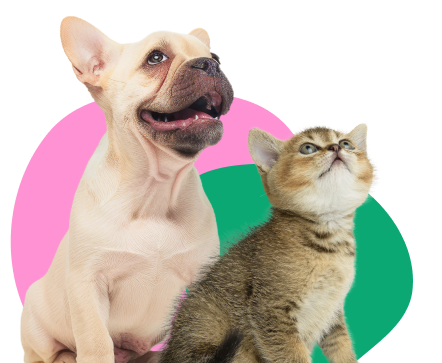History
The Hovawart is an ancient dog breed that traced its history back to the 1200s when the breed was forever immortalized for its bravery in the Sachsenspiegel, a medieval code of law. Due to its usefulness in tracking robbers, the Hovawart was considered as one of the “Five Noble Breeds” in the 1400s.
After the medieval period, the popularity of the Hovawart began to decline, with newer breeds like German Shepherd taking over its guarding duties. It wasn’t until the early 1900s that prominent zoologist, Kurt Friedrich König, spearheaded the effort to save the Hovawart from extinction. To do this, they followed a breeding program, which involved cross-breeding German Shepherds, Leonbergers, Newfoundlands, African hunting dogs, and Bernese Mountain Dogs. These dogs served as the forebears from which the modern Hovawart originated from.
Personality
This pooch is even-tempered, brave, and self-assured, making it one of the elite members of German canines. Its name, which means “farm watchers”, is pretty telling – this dog is extremely watchful and devoted to their family. They are reserved to strangers and may even meet one with loud booming barks that will make anyone think twice before going further.
For all their toughness and courage, the Hovawart is good with children. Just make sure that training starts early on, rules and boundaries are established, and your furry pal is properly socialized while it’s still a puppy. If you have these down pat, having a canine with this kind of muscle power in the house shouldn’t be a problem.
Appearance
The Hovawart is a medium to large dog breed with a broad, rounded head. They have a height of 23-29 inches at the withers and they can weigh 30-50 kilograms. This pooch has a thin undercoat and long, wavy outer coat with fringes in its chest, backs of the limbs, abdomen, and tail.
The Hovawart can come in one of the three-color varieties: black and gold, black, and blond. Blond Hovawarts are often mistaken as Golden Retrievers because of its close resemblance to the breed in color and features.
Health
The Hovawart is a healthy breed and they’re not as predisposed to genetic conditions as other breeds. They have a life expectancy of 10-14 years. However, even with sound breeding practices, occasional health concerns could occur. As a fur parent, you need to be mindful of these conditions:
Hip Dysplasia
Thanks to good breeding practices, hip dysplasia rate are less than 5% in Hovawarts. But even with excellent genetics, your pooch could still suffer from this condition because environment and nutrition are also factors in the development of this deformity.
If you notice symptoms like difficulty in moving around, lameness in the hind legs, or pain, you need to have it consulted with the vet immediately. Aside from medication or surgery, the vet may also prescribe a nutrition plan for your Hovie and you may have to limit its activities.
Gastric Dilatation and Volvulus (GDV)
Commonly known as bloat, GDV is a medical emergency. In this condition, gas accumulates in your pooch’s stomach (dilatation). And to add complication to the matter, the stomach could twist, which could block blood supply, making this a fatal condition if not treated right away.
The moment you notice symptoms like enlargement of the abdomen, restlessness, retching or vomiting, and pain in the abdominal area, take your pup to the vet immediately. The vet will have to stabilize your fur baby first before doing some surgery to correct the stomach’s position.
Tips for Taking Care of a Hovawart
To ensure that you raise a healthy and well-adjusted dog, you need to provide for its needs and give it the best environment. Here are considerations in raising a Hovawart:
Choosing a puppy
Make sure you’re dealing only with reputable and seasoned breeders of Hovawarts. Excellent breeders should be able to give a primer on how to raise your puppy. They should also provide health clearances from respected organizations like the Orthopedic Foundation for Animals to ensure that your pup is in tiptop health.
Grooming
Because of its thin undercoat, your Hovie won’t require rigorous grooming. They are seasonal shredders and they just need occasional brushing to bring out the natural shine in their fur. You only have to give it a bath when it’s dirty or it begins to smell.
A Hovie’s nails could grow fast so you need to trim it regularly. Similarly, you need to clean its ears and brush its teeth constantly to prevent ear infections and dental problems.
Training
The Hovawart is a muscular, confident, and intelligent breed. And your pup has no qualms using all of those qualities. That’s why you need to be firm and consistent in setting boundaries and rules while it’s still a puppy. Make sure it knows that you’re the leader of the pack and that’s not negotiable.
This pooch is not your ordinary family dog. The Hovie was bred to work and it finds no greater pleasure than to put its energy to good use. For this reason, you need to provide it at least an hour of exercise a day to prevent behavioral issues.
Ideal Living Condition
The Hovawarts thrive best when they’re given a garden or yard to guard. And although they can be trained to live with other pets, you have to be aware that should any scuffle arise, a Hovawart can inflict serious injury on smaller dogs. Thus, being the only dog in the house would be ideal for a Hovie for safety’s sake.
If you are a novice dog parent, you might find the Hovie a handful. But if you’re used to raising and training dogs, this breed could make a devoted companion. Having this pooch around is having a confident, brave, and beautiful friend watching your back at all times.






